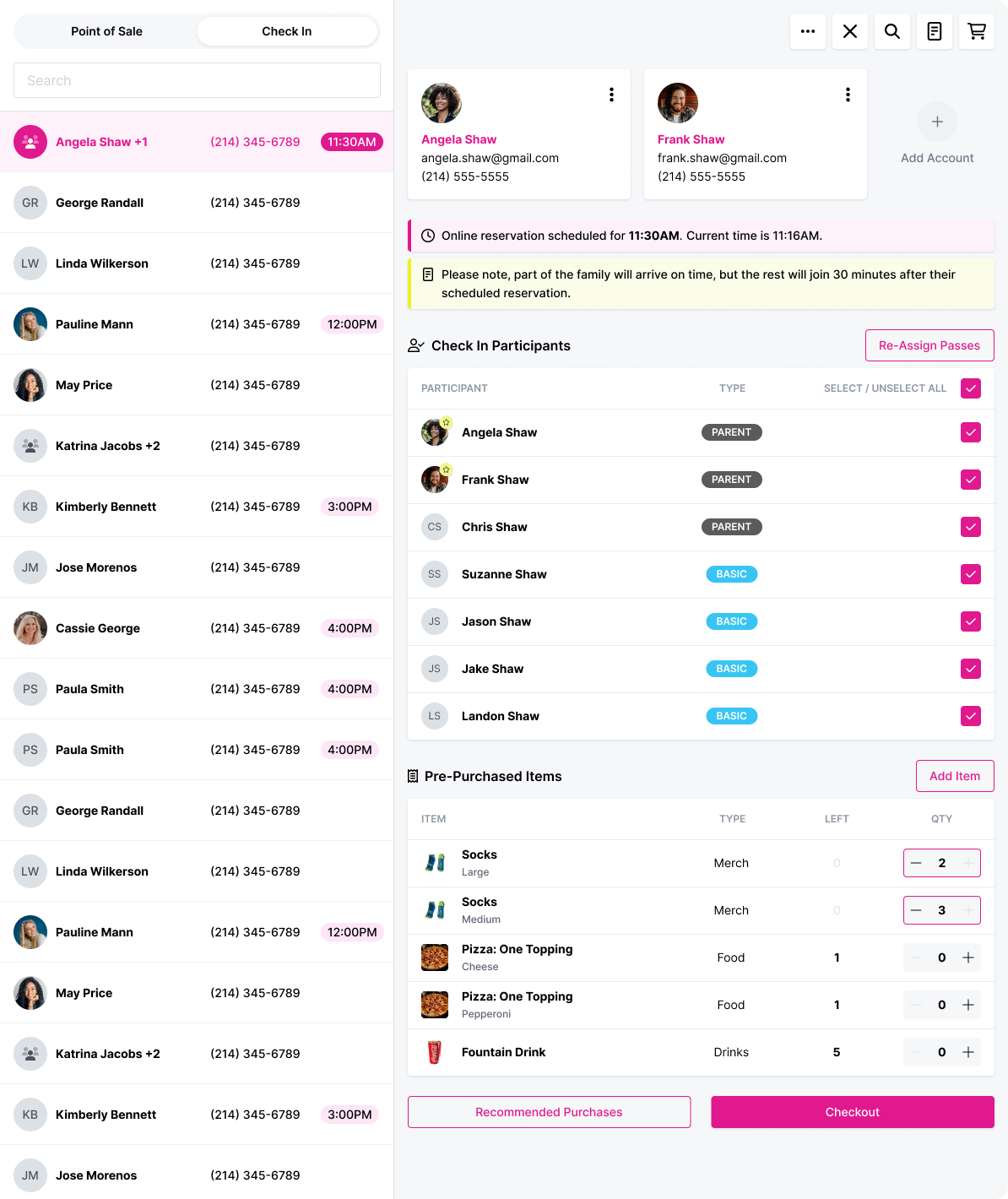Due to an NDA, I am unable to share the clients information at this time. For serious inquiries I can provide a demo of the project upon request.
Overview
While at Allata, I led the redesign of a nationwide entertainment company’s Point-of-Sale (POS) and Kitchen Display Systems. These systems were used across hundreds of locations and had become increasingly outdated and difficult to navigate. The goal was to improve the in-store experience, reduce friction for staff, and establish a scalable design foundation that could support future digital initiatives across the parent company’s broader portfolio of brands.
Goal
The client needed a modern front-end experience that could immediately improve usability for staff while setting the stage for a larger platform evolution. The project focused on elevating the day-to-day functionality of the system, improving operational clarity, and creating a cohesive design language that could extend across their other in-store systems and brands.
My role
I was the lead and only designer at the beginning of the project. I was responsible for driving all of the user experience design and a significant portion of the visual design. As the project progressed, another designer joined to assist with interface refinement, but I remained the primary contributor throughout. My role covered research, flow design, prototyping, and ongoing collaboration with engineering and product leadership to ensure alignment between design and implementation.
Timeline
3 months
Research
We began with a series of deep-dive stakeholder interviews to understand existing workflows, pain points, and business needs. These conversations gave us a clear view of how the current system was holding teams back. To build empathy with end users, we visited a high-volume location in the Dallas area, where we observed how front-of-house and back-of-house staff interacted with the system in real time. Seeing the software in action during busy hours revealed key breakdowns in usability and allowed us to identify what improvements would make the biggest impact.


Design
With a foundation of insights in place, I began designing updated flows for check-in, ordering, and kitchen management. A major focus was simplifying navigation and reducing the number of steps needed to complete key actions. The old system had low visual contrast and was difficult to follow, so we introduced a cleaner visual hierarchy and a structure that supported speed and ease of use. I worked closely with developers, project managers, and client stakeholders through weekly Agile ceremonies and several additional working sessions each week to validate and refine our direction. We moved quickly through iterations, using prototyping and feedback to stay aligned and on track.



Future Considerations
Although I left the project before the redesigned system was fully implemented, the client’s leadership responded very positively throughout the process. They saw the redesign as a critical improvement — not only in its day-to-day usability, but in the way it positioned the company for long-term scalability across their brand ecosystem. This was also my first time designing for a POS system, which forced me to rethink my approach to interface design. It challenged me to consider how clarity, speed, and operational complexity come together in high-pressure environments. That shift in mindset was a valuable growth moment, and one I’ve carried forward in my work since.

